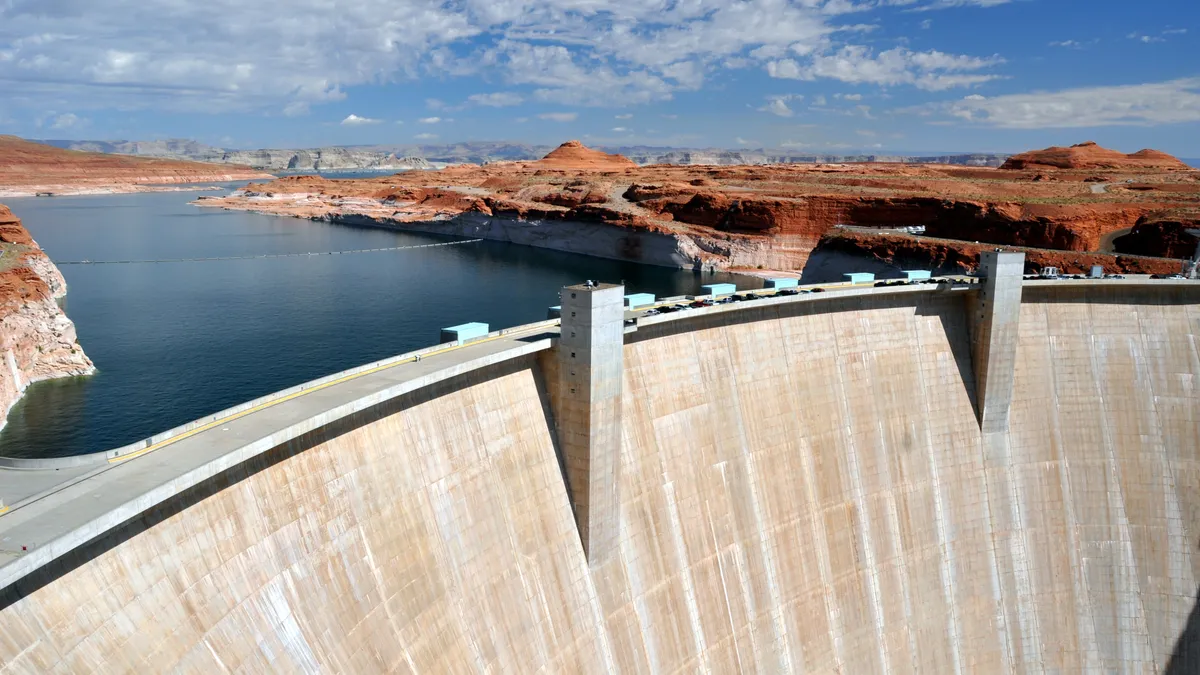Dive Brief:
- Reduced hydroelectric generation due to severe drought could increase carbon emissions from individual fossil-fueled power plants by up to 65% above average conditions in the Western U.S., according to analysis from Stanford University.
- Accelerated renewable energy development would have a limited impact on emissions from energy fossil fuel generation during future droughts, the study concludes.
- Using models based on normative weather patterns in energy planning exercises “is clearly insufficient” for western utilities looking to reduce emissions, said Minghao Qiu, a postdoctoral researcher at Stanford University and the lead author on the report.
Dive Insight:
A warmer, drier world could complicate efforts to eliminate carbon emissions from electricity generation in the Western U.S., analysis from Stanford University says.
Based on weather, generation and emissions data from 2001-2021, extreme drought conditions can significantly increase carbon emissions from gas- and coal-fired power plants brought online to cope with losses from underperforming hydroelectric plants, according to the analysis.
The interconnected nature of Western utilities means many of these emissions occur outside the region directly impacted by any given drought; excess mortality and other costs associated with these drought-induced emissions could be 1.2-2.5 times higher than the reported direct economic costs from lost hydropower generation, the study says.
The excess emissions triggered by drought will become even more important as the West decarbonizes. In some years, emissions from fossil fuel plants brought back online to cope with drought could account for 50% of emissions associated with energy production in the region, Qiu said.
While the Stanford paper focuses on projections and future remedies, these aren’t, strictly speaking, hypothetical futuristic scenarios, Qiu said. “When you read the news [from 2021-2022], governors and local officials approved use of natural gas units that had not been used in a long time” to meet energy demand during the drought, Qiu said.
Data reported by Southern California Edison show that the utility’s direct carbon emissions increased 67% between 2021-2022 as a result of increased use of SCE’s combined cycle natural gas plant, Mountainview. Increased demand in the summer and decreased energy production led the California Independent System Operator to call for power from Mountainview more frequently, according to SCE.
SCE notes in its climate planning report Adapting for Tomorrow that a 40% projected decline in snowpack and more intense droughts could lead hydroelectric generation to become less reliable in the future.
As planners think about the future grid, Qiu said, this increased risk of drought must be taken into account — simply accelerating renewable energy development may not be enough, according to the research team’s projections. Those results point to the importance of limiting carbon emissions to contain the effects of further warming in the future, Qiu said. But in the near-term, he said, they also suggest that utilities should consider closing coal plants and retrofitting natural gas plants with carbon capture to reduce emissions during drought conditions.
The increased risk of severe drought should also be taken into account during resource and grid planning exercises, he said.
“I know there are some energy groups that already take this into account, but more often when you read a net zero planning roadmap what they do is take a typical year of what demand and supply looks like, and try to optimize for that [typical year],” Qiu said. “And that is clearly insufficient, at least in the Western U.S. where drought is such a big part of the story.”














